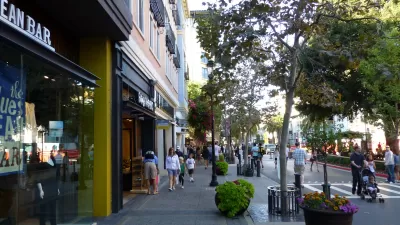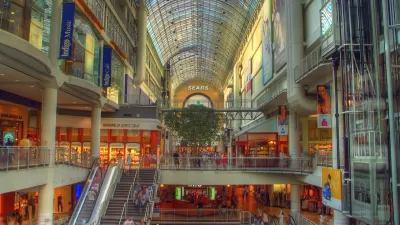Fewer and fewer malls are being built in the U.S., and as they fade from the American landscape, retailers feel the pain.
"Moribund malls have not gone unnoticed amongst industry analysts and Web sites like Deadmalls.com that feature photos of hundreds of now-abandoned sites. But what were once just worrying signs appear to have finally flat-lined. Last year was the first in half a century that a new indoor mall didn't open somewhere in the country-a precipitous decline since the mid-1990s when they rose at a rate of 140 a year, according to Georgia Tech professor Ellen Dunham-Jones, coauthor of the forthcoming book "Retrofitting Suburbia," which focuses on the decline of malls and other commercial strips. Today, nearly a fifth of the country's largest 2,000 regional malls are failing, she says, and according to the International Council of Shopping Centers, and a record 150,000 retail outlets, including such mall mainstays as the Gap and Foot Locker, will close this year. Xanadu, whose officials declined NEWSWEEK's requests for comment, has named just nine tenants for its 200 spaces."
FULL STORY: Is The Mall Dead?

Manufactured Crisis: Losing the Nation’s Largest Source of Unsubsidized Affordable Housing
Manufactured housing communities have long been an affordable housing option for millions of people living in the U.S., but that affordability is disappearing rapidly. How did we get here?

Americans May Be Stuck — But Why?
Americans are moving a lot less than they once did, and that is a problem. While Yoni Applebaum, in his highly-publicized article Stuck, gets the reasons badly wrong, it's still important to ask: why are we moving so much less than before?

Using Old Oil and Gas Wells for Green Energy Storage
Penn State researchers have found that repurposing abandoned oil and gas wells for geothermal-assisted compressed-air energy storage can boost efficiency, reduce environmental risks, and support clean energy and job transitions.

Updating LA’s Tree Rules Could Bring More Shade to Underserved Neighborhoods
A new USC study finds that relaxing Los Angeles’ outdated tree planting guidelines could significantly expand urban tree canopy and reduce shade disparities in lower-income neighborhoods, though infrastructure investments are also needed.

California's Canal Solar Projects Aim to Conserve Resources and Expand Clean Energy
California’s Project Nexus has begun generating electricity from solar panels installed over irrigation canals, with researchers and state agencies exploring statewide expansion to conserve water and boost clean energy production.

HHS Staff Cuts Gut Energy Assistance Program
The full staff of a federal program that distributes heating and cooling assistance for low-income families was laid off, jeopardizing the program’s operations.
Urban Design for Planners 1: Software Tools
This six-course series explores essential urban design concepts using open source software and equips planners with the tools they need to participate fully in the urban design process.
Planning for Universal Design
Learn the tools for implementing Universal Design in planning regulations.
Heyer Gruel & Associates PA
City of Moreno Valley
Institute for Housing and Urban Development Studies (IHS)
City of Grandview
Harvard GSD Executive Education
Salt Lake City
NYU Wagner Graduate School of Public Service
City of Cambridge, Maryland





























